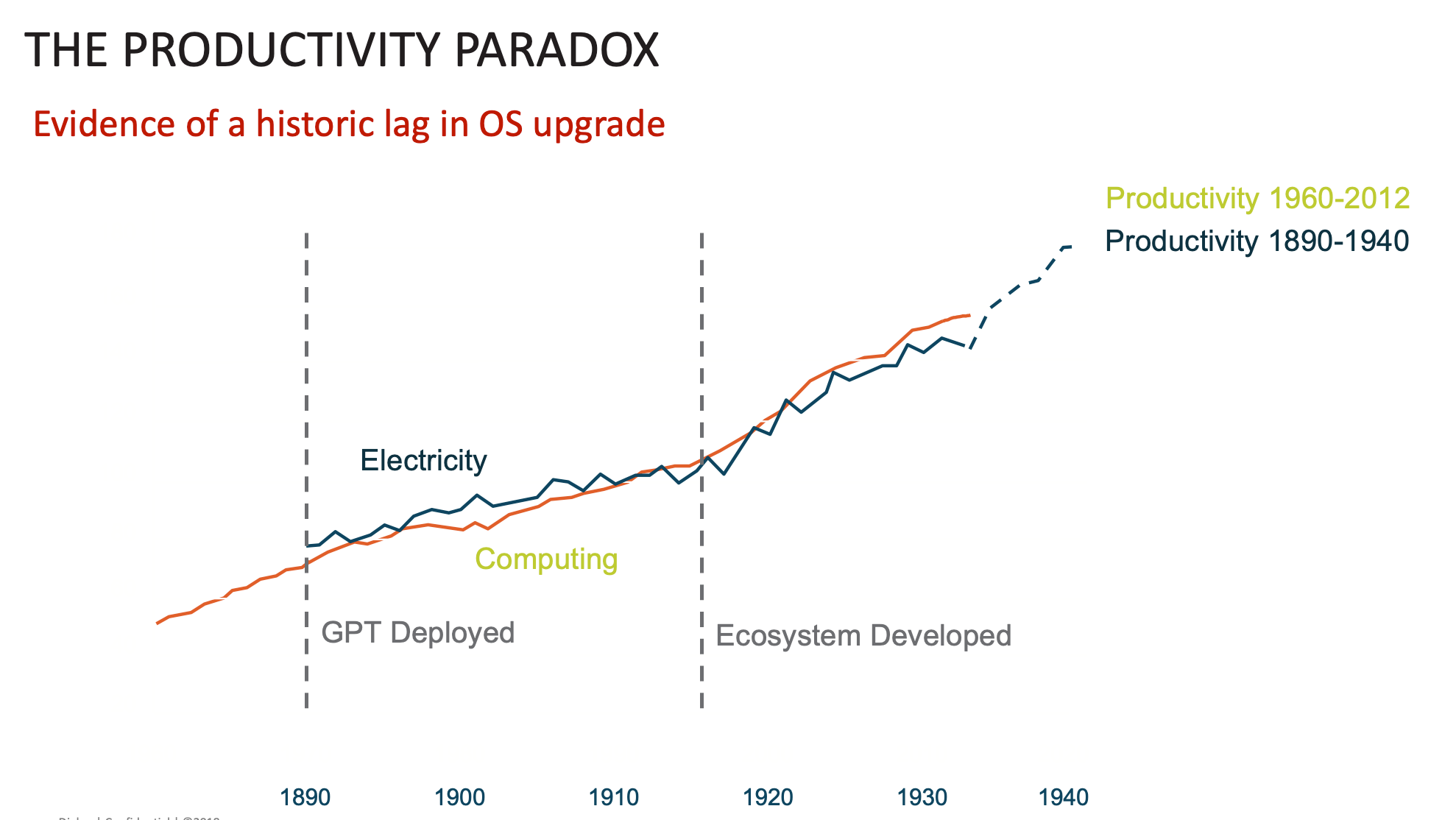The observation that advancements in information technology and computerization do not always lead to immediate boosts in productivity.
The productivity paradox, a concept that emerged in the 1980s, has puzzled economists and researchers for decades. It centers around the observation that despite significant investments in information technology and computerization, the expected substantial increases in productivity do not always materialize. As organizations adopt new technologies and automated systems, the anticipated gains in efficiency, output, and overall performance often fail to match expectations. This discrepancy has led to debates and inquiries into the factors that might be hindering the realization of the full potential of these technological advancements.
One explanation for the productivity paradox lies in the complexities of technology implementation and integration within existing organizational structures. Embracing new technologies often requires significant changes to work processes, employee roles, and management practices. Companies may face difficulties in adapting to these changes, leading to temporary productivity declines during the transition period. Additionally, technology adoption can create disruptions that temporarily offset the potential gains. Training employees to use the new systems effectively, ensuring seamless integration across departments, and overcoming resistance to change are critical challenges that organizations must address to overcome the paradox.

The productivity paradox underscores the importance of complementary organizational changes alongside technology adoption. Simply investing in new software or hardware may not be enough to realize the promised productivity benefits fully. Organizations need to rethink their strategies, streamline workflows, and restructure their operations to align with the capabilities of the new technologies. Effective communication, collaboration, and a supportive work culture are essential to ensure that employees embrace the changes and leverage the technologies to their full potential. In some cases, companies may need to reallocate resources, invest in employee training, and implement performance measurement systems to identify areas for improvement and make the most of the adopted technologies.
In conclusion, the productivity paradox serves as a reminder that technology alone cannot guarantee productivity gains. The successful integration of new information technologies into an organization requires a comprehensive approach that considers not only the technical aspects but also the human and organizational factors. By addressing the challenges associated with technology adoption, fostering a culture of innovation, and implementing complementary organizational changes, businesses can navigate the productivity paradox and unlock the full potential of their investments in information technology.
.png?height=120&name=Panarchy_logo_horizontal_transparent-1%20(1).png)